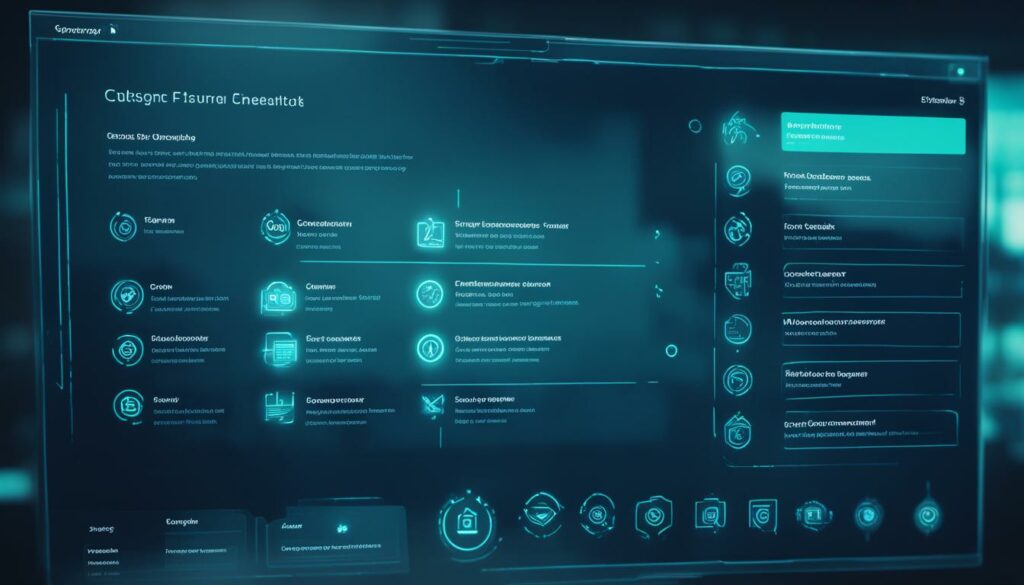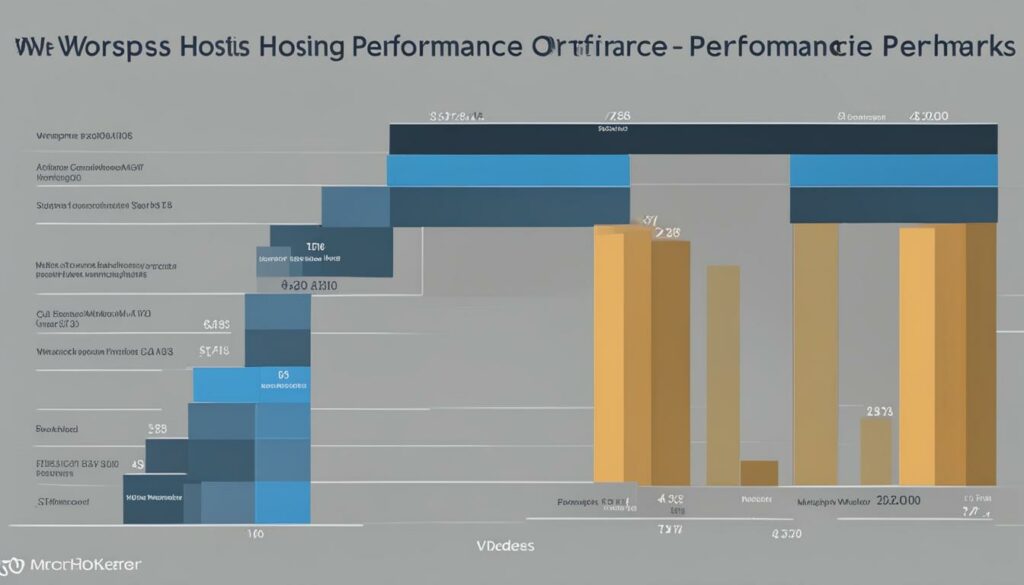Are you ready to take your online presence to the next level? In today’s digital era, having a well-designed website is crucial for success. Whether you’re starting from scratch or looking to revamp your existing site, understanding the ins and outs of website builders and hosting is essential.
Website builders provide user-friendly platforms that allow you to create and customize your website without any coding knowledge. With a variety of templates, design options, and tools at your disposal, you can build a professional-looking website that suits your brand and goals.
Once your website is designed, you’ll need reliable hosting to ensure your site is accessible to visitors. Web hosting services provide the infrastructure and technologies necessary to keep your website up and running smoothly. From shared hosting plans to dedicated servers, there are options to fit every business size and budget.
In this article, we’ll dive into the key insights and best practices for website builders and hosting. Whether you’re a small business owner, a blogger, or an aspiring entrepreneur, these guidelines will help you create an engaging and user-friendly website that drives results.
Key Takeaways:
- Website builders offer user-friendly platforms to create and customize your website without coding.
- Hosting services provide the infrastructure and technologies necessary to keep your website accessible.
- Choose a website builder and hosting plan that suits your business size and budget.
- Focus on creating a professional and visually appealing website that reflects your brand.
- Ensure your website is responsive, mobile-friendly, and accessible to all users.
Simplicity in Website Design
When it comes to website design, simplicity is key. By embracing a minimalistic approach and focusing on user-friendly design, you can create a visually appealing website that engages and satisfies your visitors.
One of the first steps towards simplicity in website design is to eliminate unnecessary elements. Cluttered and busy designs can distract users from the core message of your website and make it difficult for them to navigate. By removing excess graphics, animations, and text, you can create a clean and streamlined design that allows your content to shine.
Another important aspect of simplicity is the use of a limited color palette and legible typefaces. A cohesive and harmonious color scheme not only creates a visually pleasing experience but also helps guide users’ attention to important elements of your website. Additionally, choosing easy-to-read fonts ensures that your content is accessible and enjoyable to read across different devices and screen sizes.
Graphics and images should serve a functional purpose in your website design. Instead of adding visuals randomly, consider how they can enhance the user experience and support the content. Whether it’s showcasing products, guiding users through a process, or simply adding visual interest, every graphic should have a purpose and contribute to the overall user-friendly design.
“Simplicity is the ultimate sophistication.”
– Leonardo da Vinci
An excellent example of simple yet effective website design is HERoines Inc. Their homepage demonstrates the power of minimalism in capturing attention and conveying a clear message. The use of ample white space, a concise headline, and a single call-to-action button creates a focused and uncluttered experience for visitors, making it easy for them to understand the purpose of the website and take action.
| Benefits of Simplicity in Website Design | Examples |
|---|---|
|
|
Visual Hierarchy for User-Friendly Websites
Visual hierarchy plays a vital role in designing user-friendly websites. It allows you to guide users’ attention to the most important elements, increasing user engagement and facilitating desired actions. By adjusting the position, color, or size of specific website elements, you can strategically structure your site to optimize user experience.
Let’s take a look at an example from Spotify. On their homepage, you’ll notice how the main heading, “Discover Your Favorite Music,” is bold, prominent, and positioned at the top of the page. This immediately captures users’ attention and sets the tone for the overall experience. Additionally, the call-to-action button, “Get Started,” is strategically placed below the heading, drawing users’ attention and encouraging them to take action. These deliberate choices in visual hierarchy effectively guide users through the website, increasing engagement and conversion rates.
Creating a visually appealing and user-friendly website design involves more than just aesthetics. It requires a thoughtful consideration of the placement and hierarchy of important website elements. By understanding and implementing visual hierarchy, you can optimize user engagement and create a seamless user experience.

Key principles in visual hierarchy:
- Positioning: Strategically place important elements on the page to draw attention.
- Color: Use contrasting colors to highlight essential elements and create a sense of visual importance.
- Size: Emphasize important elements by increasing their size relative to other elements on the page.
Benefits of visual hierarchy in website design:
“Visual hierarchy is like a roadmap for users, guiding them to the most important information and actions on your website.”
| Benefits | Explanation |
|---|---|
| Improved User Experience | A well-designed visual hierarchy helps users navigate your website effortlessly, making it easier for them to find what they need. |
| Increased User Engagement | By directing users’ attention to key elements, visual hierarchy encourages interaction, leading to increased engagement and conversion rates. |
| Enhanced Website Design | Implementing visual hierarchy adds visual appeal to your website, making it visually cohesive and professional. |
Navigability for Seamless User Experience
When it comes to creating a user-friendly website, intuitive navigation is key. A well-structured website with easy-to-use navigation ensures that visitors can find the information they’re looking for quickly and effortlessly. Here are some tips to optimize your website’s navigation:
- Keep the structure simple: A clear and straightforward website structure helps users understand where they are and how to navigate through your site. Avoid cluttering the menu with too many options, and make sure the hierarchy of pages is logical.
- Include navigation in the footer: Adding navigation options in the footer of your website allows users to easily access key pages, even when they reach the end of a long page.
- Use breadcrumbs: Breadcrumbs provide a trail of links that show users the path they have taken to reach the current page. This feature helps visitors understand the structure of your website and navigate back to previous pages if needed.
- Provide a search bar: Including a search bar prominently on your website allows users to directly search for specific content or products. This feature saves time and enhances the overall user experience.
- Include links within page copy: Embedding relevant links within your page content helps users navigate to related information or explore additional resources. These contextual links enhance the user’s understanding and engagement.
Consistency is also crucial when it comes to navigation. Maintain a consistent location and labeling for your navigation elements throughout the site. This ensures that users can easily locate the navigation menu and understand its purpose.
Remember, user-friendly navigation makes a significant impact on the overall user experience of your website. By implementing intuitive navigation techniques and optimizing the structure, you can create a seamless browsing experience for your visitors.

| Best Practices | Description |
|---|---|
| Simplicity | Avoid overwhelming users with too many navigation options. Keep the structure clean and minimal. |
| Footer Navigation | Include important navigation options in the footer for easy access throughout the website. |
| Breadcrumbs | Show users the path they have taken on your website, helping them navigate back to previous pages. |
| Search Bar | Provide a prominent search bar to allow users to quickly find specific content or products. |
| Contextual Links | Include links within page copy to guide users to related information or additional resources. |
| Consistency | Maintain a consistent location and labeling for navigation elements throughout the website. |
Consistency in Website Design
In order to provide a seamless user experience, it’s essential to maintain consistency in your website design. Consistency helps visitors understand the purpose of each page and enhances usability and user experience (UX). By focusing on elements such as backgrounds, color schemes, typefaces, and writing tone, you can create a cohesive and visually appealing website.
Consistent branding is important for creating a strong identity and building trust with your audience. Use the same logo, fonts, colors, and design elements throughout your website to reinforce your brand image. This establishes recognition and helps users navigate your site easily.
When it comes to website layouts, maintaining consistency ensures a predictable and intuitive browsing experience. While it’s acceptable to use different layouts for specific types of pages, keeping an overall consistent look and feel helps visitors feel familiar and comfortable with your website.
“Consistency is one of the most powerful usability principles: when things always behave the same, users don’t have to worry about what will happen. Instead, they know what will happen based on earlier experience.” – Jakob Nielsen
The Airbnb Example
An excellent example of consistent layout design can be found in Airbnb’s “Help” pages. The layout across these pages is consistent, allowing users to quickly find the information they need. Take a look at the example below:

In this example, you can see how Airbnb maintains a consistent layout by using the same header, sidebar, and footer throughout their help pages. This consistency helps users navigate the information easily and provides a cohesive experience across all pages.
By prioritizing website design consistency, you can enhance your brand image, improve usability, and create a positive user experience for your visitors.
Responsivity for Mobile-Friendly Websites
In today’s mobile-driven world, it’s imperative to ensure that your website is compatible with different devices.
Responsive design is the key to creating mobile-friendly websites. With responsive design, your website automatically adjusts and resizes its content to fit different screen dimensions. This means that no matter if your visitors are using a desktop, tablet, or smartphone, your website will always look great and provide a seamless user experience.
But it’s not just about making your website look good on mobile devices; you also need to consider cross-browser compatibility. This means testing your website on different web browsers to ensure that it displays correctly and consistently across all platforms. By doing so, you can avoid potential display issues that may frustrate visitors and drive them away from your site.
Here’s an example of how responsive design can enhance the user experience:
“After implementing responsive design, our website saw a dramatic increase in mobile traffic. Visitors were able to easily navigate through our content, and our bounce rate significantly decreased. It’s definitely a game-changer for anyone who wants their website to be accessible and user-friendly on all devices.” – Jane Smith, CEO at XYZ Company
Investing in responsivity and cross-browser compatibility is crucial for ensuring that your website remains accessible and functional, regardless of the device or web browser that your visitors are using. By meeting these requirements, you can provide a seamless and enjoyable user experience, keeping your audience engaged and encouraging them to stay on your site longer.
| Mobile | Tablet | Desktop |
|---|---|---|
| Adapted layout to fit smaller screens | Optimized for larger screens | Full website experience |
| Touch-friendly navigation | Intuitive touch-based interactions | Traditional mouse and keyboard navigation |
| Optimized content hierarchy for smaller screens | Expanded content hierarchy | Enhanced content organization |
By implementing responsive design and ensuring cross-browser compatibility, you can create a website that adapts to different devices and delivers a seamless user experience across the board.
Accessibility for Inclusive Website Experience
In today’s digital landscape, it’s crucial to prioritize inclusive design and ensure web accessibility for all users, including those with disabilities and limitations. By making your website accessible, you create a positive user experience and demonstrate a commitment to inclusivity.
Web Content Accessibility Guidelines (WCAG) provide a comprehensive framework to ensure web accessibility. By adhering to these guidelines, you can make your website perceivable, operable, understandable, and robust.
Perceivable
Inclusive design emphasizes making websites perceivable for all users. This means providing alternative text for images, captions for videos, and proper labeling for interactive elements. Including descriptive audio descriptions for video content ensures that visually impaired users can access and understand the information. Consider the user experience of people with visual or hearing impairments when designing your website.
Operable
Operability is key to web accessibility. Ensure that users can easily navigate and interact with your website using keyboard navigation, without relying solely on a mouse. Provide clear and visible focus indicators to guide users as they move through your website. Avoid using interactive elements, such as dropdown menus, that require precise mouse movements or hover effects.
Understandable
Creating a website that is easy to understand is crucial for inclusive design. Use clear and concise language in your content, making sure it is easily readable. Provide instructions and error messages that are straightforward and actionable. Avoid using complex jargon or confusing terminology that may alienate users.
Robust
Robustness ensures that your website is compatible with different assistive technologies and devices. Use web standards compliant code and avoid relying on technology-specific features or plugins that may present barriers to accessibility. Regularly test your website across different browsers, assistive technologies, and devices to ensure consistent and accessible user experiences.
By prioritizing web accessibility, you create an inclusive online environment that values diversity and provides equal access to information and services. It’s important to continuously evaluate and improve the accessibility of your website to ensure a positive user experience for all users.
| Benefits of Web Accessibility | Examples |
|---|---|
| Improved user experience for all users | Website A increased its user engagement by 25% after implementing web accessibility features |
| Expanded audience reach and customer base | Website B saw a 30% increase in website traffic from users with disabilities after optimizing accessibility |
| Compliance with legal requirements and regulations | Website C avoided potential legal issues by ensuring adherence to web accessibility standards |
| Positive brand perception and reputation | Website D received recognition and praise for its commitment to inclusivity through web accessibility |
Conclusion
Creating a user-friendly and visually appealing website is crucial for establishing a successful online presence. By implementing website design best practices, you can ensure that your site engages visitors and provides them with an enjoyable user experience.
Embracing simplicity, visual hierarchy, and navigability in your website design allows users to easily find and interact with your content. Consistency in branding and layout enhances usability and helps visitors navigate your site with confidence.
Additionally, responsiveness is key in today’s mobile-driven world. Ensuring that your website is compatible with various devices and browsers prevents users from encountering display issues, leaving them satisfied with their browsing experience.
Finally, website builders and hosting services can provide you with the tools, support, and value for money necessary to achieve your website design goals. By choosing reputable website builders and reliable hosting providers, you can streamline the design process and optimize your site’s performance.
FAQ
Q: What are some key website builders and hosting services available?
A: Some popular website builders include Wix, Squarespace, Weebly, and WordPress. As for hosting services, there are options like Bluehost, SiteGround, HostGator, and DreamHost.
Q: What are the best website builders available?
A: The best website builders vary depending on individual needs and preferences. However, some highly recommended options are Wix, Squarespace, and WordPress, as they offer intuitive interfaces, customizable templates, and robust features.
Q: How can I compare different website builders?
A: To compare website builders, you can consider factors such as ease of use, template selection, customization options, pricing plans, SEO features, integrations, and customer support. Reading reviews and trying out free trials can also be helpful.
Q: What are some best practices for simplicity in website design?
A: To achieve simplicity in website design, eliminate unnecessary elements, use a limited color palette and legible typefaces, ensure graphics have a functional purpose, and focus on user-friendly navigation. Keeping the design clean and uncluttered is key.
Q: Why is visual hierarchy important in website design?
A: Visual hierarchy helps guide users’ attention to the most important elements on a website. By adjusting the position, color, or size of certain elements, you can draw attention to key messages, call-to-action buttons, or important information, enhancing user engagement.
Q: How can I optimize website navigation for a seamless user experience?
A: To optimize website navigation, keep the structure simple and intuitive, include navigation in the footer, use breadcrumbs, provide a search bar, and include links within page copy. Consistency in navigation labels and location is also essential.
Q: Why is consistency important in website design?
A: Consistency in website design, including backgrounds, color schemes, typefaces, and writing tone, enhances usability and user experience. It helps visitors understand the purpose of each page and creates a cohesive brand identity.
Q: How can I ensure my website is responsive and mobile-friendly?
A: To ensure responsivity, use a responsive website design that automatically adjusts content to fit different screen dimensions. Additionally, test your website’s cross-browser compatibility to ensure consistent presentation across devices and browsers.
Q: What is web accessibility and why is it important?
A: Web accessibility focuses on making websites usable for people with disabilities and limitations. It ensures that individuals with visual, auditory, motor, or cognitive impairments can access and navigate websites effectively. Prioritizing web accessibility demonstrates a commitment to inclusivity.
Q: How can I create an inclusive and accessible website?
A: To create an inclusive and accessible website, follow the Web Content Accessibility Guidelines (WCAG). These guidelines provide recommendations for ensuring that websites are perceivable, operable, understandable, and robust. Features like alternative text for images and keyboard accessibility can greatly enhance website accessibility.
Q: What are the key takeaways for successful website design?
A: The key takeaways for successful website design include prioritizing simplicity, utilizing visual hierarchy, ensuring navigability, maintaining consistency, implementing responsivity, prioritizing accessibility, and considering the use of website builders and hosting services that align with your goals and requirements.
Source Links
- https://www.business.qld.gov.au/running-business/marketing-sales/marketing/websites-social-media/building-managing-website
- https://blog.hubspot.com/blog/tabid/6307/bid/30557/6-guidelines-for-exceptional-website-design-and-usability.aspx
- https://www.techradar.com/pro/website-building/we-asked-the-experts-what-are-the-most-important-things-to-consider-when-choosing-a-website-builder












